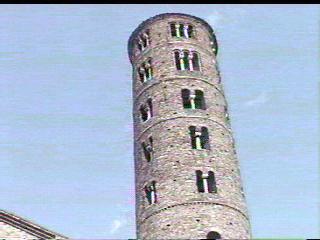 |
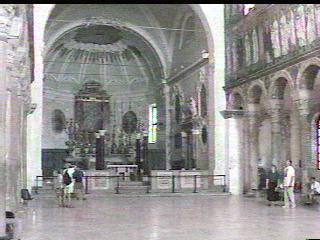 |
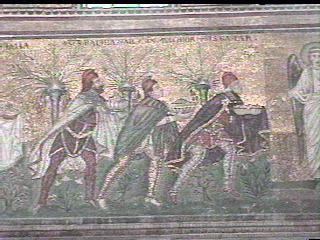 |
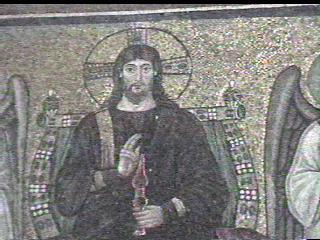 |
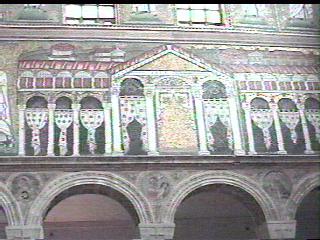 |
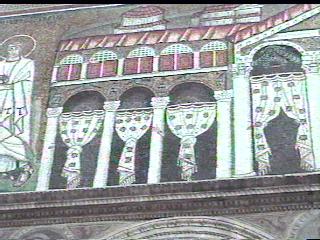 |
Apollinare was the first bishop of Ravenna and is considered a Saint. This church was first constructed in the 6th century and named after Apollinare when it was believed his bones were moved here from San Apollinare Classe. It took a papal investigation to prove them wrong. But the name remains.
The construction is simple and clean with a chancel dating from a reconstruction in 1950.
Again, this church contains many wonderful mosaics, located primarily above the columns on either side of the central worship space. Two features of these mosaics were striking to us: the images of the three wise men and the columns of Theodoric's palace.
These mosaics, dating from the 6th century, show the three wise men coming to meet Jesus. Their names, Balthassar, Melchior, and Caspar, are printed above their heads. We know the bible does not mention the number of wise men and their names. But here we find them listed only 500 years after Christ. Is there, perhaps, some fact behind the tradition? (Then again, we all "know" George Washington had wooden teeth and that was only 200 years ago.)
As Theodoric, king of the Goths, was important to the town while the church was being built, his palace is shown in the mosaics. Apparently there were also some people considered either saintly or important shown between the columns. However, subsequent generations decided they were too heretical to be shown in a church and reworked the mosaics to remove their images. But the work was incomplete and pieces of these original figures remain as fingers and hands upon the columns.
 |
 |
 |
 |
 |
 |